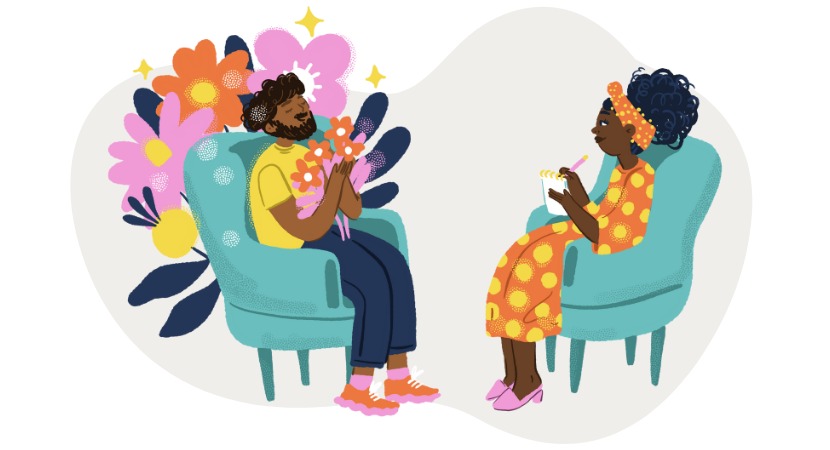February 5th, 2024

Psychotherapy, often referred to as talk therapy, refers to a variety of treatments that aim to help an individual identify troubling emotions, thoughts, and behaviors. Most psychotherapy takes place when a licensed mental health professional and a patient meet one-on-one or with other patients in a group setting.
There are numerous types of therapy and counseling approaches used to address a wide range of mental and emotional health issues. The most common types of therapy include cognitive behavioral therapy (CBT), acceptance and commitment therapy (ACT), dialectical behavioral therapy (DBT), psychodynamic psychotherapy, eye movement desensitization and reprocessing (EMDR), mindfulness based therapies, play therapy, and art therapy. Expressive therapies, such as play, dance, music, and art therapy incorporate the use of the creative arts as a form of therapy based on the assumption that healing can come through the various forms of creative expression. Further explanation into the specifics of art therapy and its benefits will be found below.
Art therapy is a form of psychotherapy involving the encouragement of free self-expression through painting, drawing, or modeling that is used to enrich lives through active art making, the creative process, and human experience. Art therapy emerged as a profession long after art had been used within assessment and general care for psychiatric patients.
Using art materials and creative expression as the key form of communication and personal expression is what distinguishes art therapy from talk therapy or recreational and educational art classes. Far more nuanced than art classes, art therapy provides individuals with rich and innovative ways to explore various aspects of themselves, including that of memories, thoughts, feelings, and other inner experiences through the use of modern visual and tactile arts materials, such as painting, sculpture, collage, drawing, photography, digital art, printmaking, eco art, and mixed media work. Through these modes of expression, art therapy embodies the primary facilitation of individual, family, group, and community healing.
Art therapy and art as therapy are two distinct approaches to using art in a therapeutic context, each with its own focus and goals. Art Therapy is a form of psychotherapy that utilizes visual art as a means of expression and communication and is facilitated by a licensed art therapist (ATR-P, ATR, or ATR-BC). Who is trained in both art and psychology. In art therapy, the emphasis is on the therapeutic relationship between the client and the art therapist to provide a safe and supportive environment for clients to delve into their inner worlds and gain insights into their psychological and emotional states. The artwork created is seen as a reflection of the client's inner experiences and is used as a tool for self-exploration and healing where the focus is on the process of creating art and the symbolism it holds for the individual.
On the other hand, art as therapy is a much broader concept that involves using art as a tool for personal well-being and self-expression without the direct guidance of a trained art therapist. It can be self-directed and does not necessarily require therapeutic oversight. The main purpose of art as therapy is to promote general well-being, stress reduction, and self-expression. It can be used by individuals as a form of self-care and as a means of coping with life's challenges. The key difference between art therapy and art as therapy lies in the presence of a trained art therapist and the specific therapeutic goals. Art therapy is a formal, structured therapeutic process led by a professional, while art as therapy is a more informal and self-directed use of art for personal well-being and self-expression. Both approaches can be valuable, depending on an individual's needs and goals.
Art therapy offers a wide range of benefits for individuals of all ages and backgrounds. These benefits can be both physical and psychological, and they contribute to the overall well-being of a person. Here are some of the key benefits of art therapy:
It's important to note that the effectiveness of art therapy may vary from person to person, and it is often used in conjunction with other forms of therapy or treatment. While “traditional” talk therapy involves solely verbal communication for the client to discuss their thoughts, feelings, and experiences to their therapist, it can be incredibly beneficial and versatile as well.
The primary difference between art therapy and talk therapy lies in the methods of communication and the therapeutic processes involved. Art therapy uses creative expression as a medium for self-exploration and healing, while talk therapy relies on verbal conversation to address mental health concerns. Both approaches have their merits, and the choice between them often depends on the individual's preferences, needs, and therapeutic goals. In some cases, a combination of both art and talk therapy may be beneficial to address a client's unique challenges.
If you're curious about art therapy, it's important to remember that you don't need to be an artist to benefit from it. The focus is on the process, not the final product. Art therapy is about self-expression and self-discovery, and anyone can engage in the creative process to promote healing and personal growth through a transformative and holistic approach to healing and self-discovery. It offers a unique way to explore and express emotions, find solutions to life's challenges, and tap into your inner creativity. No matter your age, sex, gender, or background, art therapy has the potential to make a positive impact on your mental and emotional well-being.
Our Services
Adult PsychiatryChild & Adolescent PsychiatryAdult TherapyChild & Adolescent TherapyCouples CounselingFamily TherapyGroup TherapyPsychological TestingTranscranial Magnetic StimulationPHP / IOP